1
What is it about Shree Rama that still endears his revered personality & actions, making him so beloved that his image has been stamped firmly on the Bharatiya mind as the ultimate ideal of human existence beyond thousands of millennia ?
What is it about Shree Rama that still endears his revered personality & actions, making him so beloved that his image has been stamped firmly on the Bharatiya mind as the ultimate ideal of human existence beyond thousands of millennia ?

2
So universal is his appeal that it cuts beyond time & space spanning across all the countries that were touched by Hindu civilization. Perhaps no other greater human Ideal has inspired so much as a warrior, husband, brother, son & king.
So universal is his appeal that it cuts beyond time & space spanning across all the countries that were touched by Hindu civilization. Perhaps no other greater human Ideal has inspired so much as a warrior, husband, brother, son & king.

3
Shree Rama motivates by example - as the one who leads by showing how to achieve realization, not only in material manifestation, but also by establishing the essential & radical premise for the mental evolution of the human spirit through successive stages towards the Divine.
Shree Rama motivates by example - as the one who leads by showing how to achieve realization, not only in material manifestation, but also by establishing the essential & radical premise for the mental evolution of the human spirit through successive stages towards the Divine.
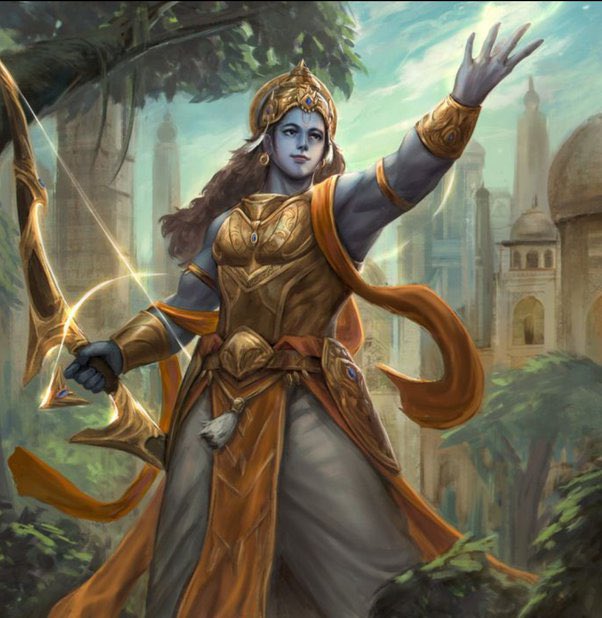
4
And perhaps what endears him most to us is that he leads by showing this divine evolution is possible while living as a householder who has to face all the challenges & difficulties of life, relationships, society & desires, yet overcome them all by being established in truth.
And perhaps what endears him most to us is that he leads by showing this divine evolution is possible while living as a householder who has to face all the challenges & difficulties of life, relationships, society & desires, yet overcome them all by being established in truth.

5
As Shree Aurobindo says - To destroy Ravana & establish Ramarajya was his mission to enable the future possibility of an order that represents the sattvik civilized human being who governs his life by reason, higher emotions, & moral ideals, such as truth, obedience, & harmony
As Shree Aurobindo says - To destroy Ravana & establish Ramarajya was his mission to enable the future possibility of an order that represents the sattvik civilized human being who governs his life by reason, higher emotions, & moral ideals, such as truth, obedience, & harmony

6
He came to establish this Sattvik ideal of a superior human mind in a world still occupied by anarchic forces, the Animal Mind & the powers of the vital Ego making its own satisfaction the rule of life, in other words, the Vanara & the Rakshasa. And his triumph paved the way.
He came to establish this Sattvik ideal of a superior human mind in a world still occupied by anarchic forces, the Animal Mind & the powers of the vital Ego making its own satisfaction the rule of life, in other words, the Vanara & the Rakshasa. And his triumph paved the way.
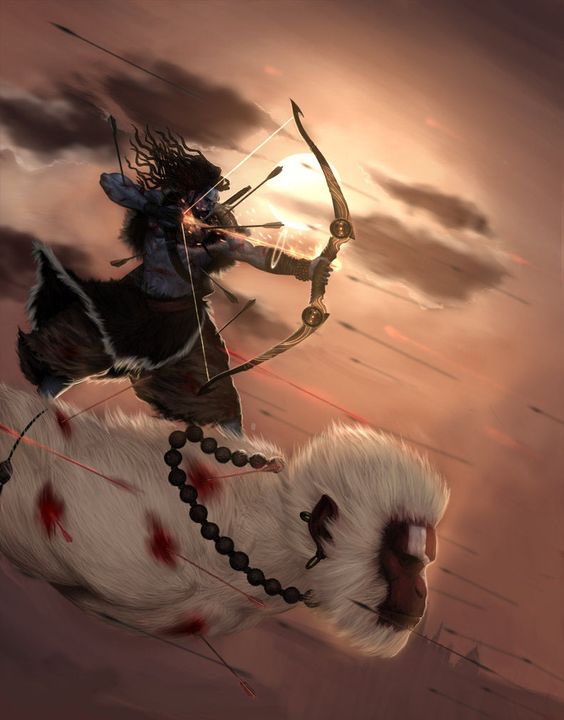
7
This is the meaning of Rama and his life-work & it is according to that ideal that he fulfilled it. It was not his business to play the chivalrous Kshatriya with the formidable brute beast that was Bali, it was his business to kill him and get the Animal Mind under his control.
This is the meaning of Rama and his life-work & it is according to that ideal that he fulfilled it. It was not his business to play the chivalrous Kshatriya with the formidable brute beast that was Bali, it was his business to kill him and get the Animal Mind under his control.
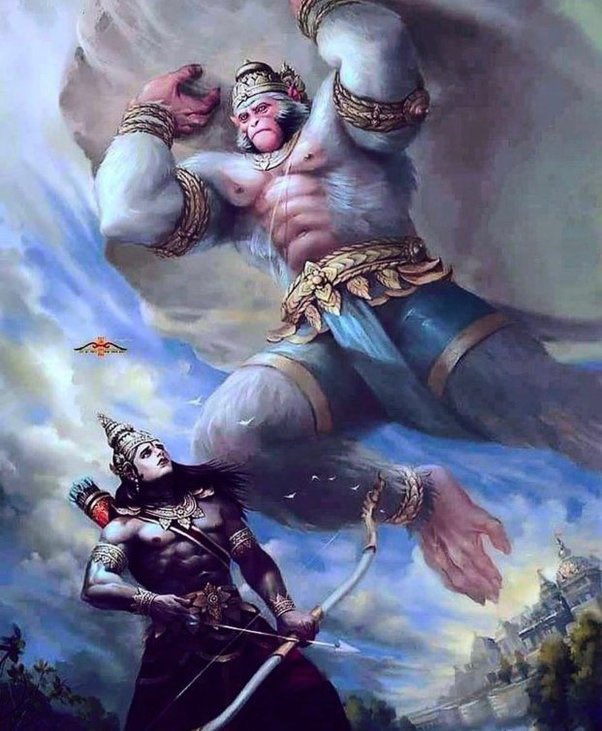
8
It was not his ideal to be perfect, but to represent sattvik man as a faithful husband & lover, a loving & obedient son, a tender & perfect brother, father, a friend to all - of outcaste Guhaka, of animal heros Sugriva, Hanuman, of vulture Jatayu, & even of Rakshasa Vibhishan.
It was not his ideal to be perfect, but to represent sattvik man as a faithful husband & lover, a loving & obedient son, a tender & perfect brother, father, a friend to all - of outcaste Guhaka, of animal heros Sugriva, Hanuman, of vulture Jatayu, & even of Rakshasa Vibhishan.

9
In all this he proved to be brilliant & striking, not out of forced duty but with a harmonious completeness. Above all he chose to exemplify & establish ideals on which highest society & its stability depend, truth & honour, sense of Dharma, public spirit & the sense of order
In all this he proved to be brilliant & striking, not out of forced duty but with a harmonious completeness. Above all he chose to exemplify & establish ideals on which highest society & its stability depend, truth & honour, sense of Dharma, public spirit & the sense of order

10
He was dedicated to truth & honour, much more even than to his filial love and obedience to his father. Yet even for love of family, he sacrificed his personal rights as the King elect & fourteen of the best years of his life going into exile in the forests.
He was dedicated to truth & honour, much more even than to his filial love and obedience to his father. Yet even for love of family, he sacrificed his personal rights as the King elect & fourteen of the best years of his life going into exile in the forests.
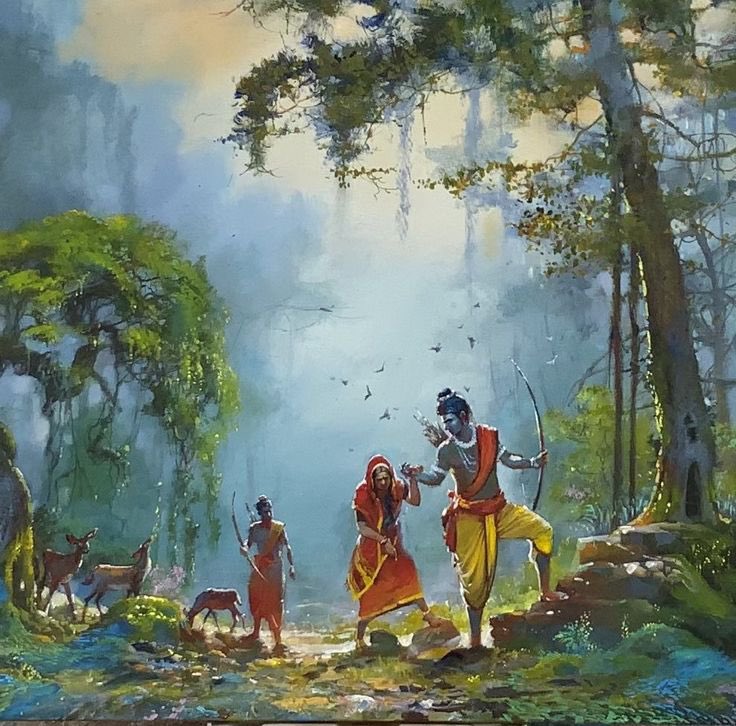
11
This spirit & sense of public order for greater good of society was the supreme civic virtue for an evolving humanity. Because at that time maintenance of an ordered community, not separate development & satisfaction of the individual was the pressing need for human evolution.
This spirit & sense of public order for greater good of society was the supreme civic virtue for an evolving humanity. Because at that time maintenance of an ordered community, not separate development & satisfaction of the individual was the pressing need for human evolution.

12
By sacrificing his own happiness & domestic life to ensure social order & justice, he represented the first moral sense of higher civilization, which is undervalued by today’s individualistic sentimental morality of the modern human who can afford to have lesser morality.
By sacrificing his own happiness & domestic life to ensure social order & justice, he represented the first moral sense of higher civilization, which is undervalued by today’s individualistic sentimental morality of the modern human who can afford to have lesser morality.
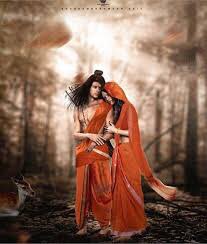
13
Today we can afford to have lesser morality because the ancients sacrificed the individual in order to make the world safe for the spirit of social order. No other figure could represent this harmony of civic responsibility & personal integrity as brilliantly as Shree Rama
Today we can afford to have lesser morality because the ancients sacrificed the individual in order to make the world safe for the spirit of social order. No other figure could represent this harmony of civic responsibility & personal integrity as brilliantly as Shree Rama

14
It was Rama’s aim to make the world safe for the ideal of the Sattvik human by destroying the sovereignty of Ravana, the Rakshasa menace. Humans today seek much more than the Sattvik ideal but Rama shall forever be the hero who established the basis of Dharmic Civilization.
It was Rama’s aim to make the world safe for the ideal of the Sattvik human by destroying the sovereignty of Ravana, the Rakshasa menace. Humans today seek much more than the Sattvik ideal but Rama shall forever be the hero who established the basis of Dharmic Civilization.

15
This thread was inspired & guided primarily by Shree Aurobindo’s description of the significance of Shree Rama as a great Avatar guiding human evolution. It was modified significantly by me for the sake of clarity & simplification.
Jai Shree Ram 🙏🕉
#JaiShriRam
This thread was inspired & guided primarily by Shree Aurobindo’s description of the significance of Shree Rama as a great Avatar guiding human evolution. It was modified significantly by me for the sake of clarity & simplification.
Jai Shree Ram 🙏🕉
#JaiShriRam
• • •
Missing some Tweet in this thread? You can try to
force a refresh






















































